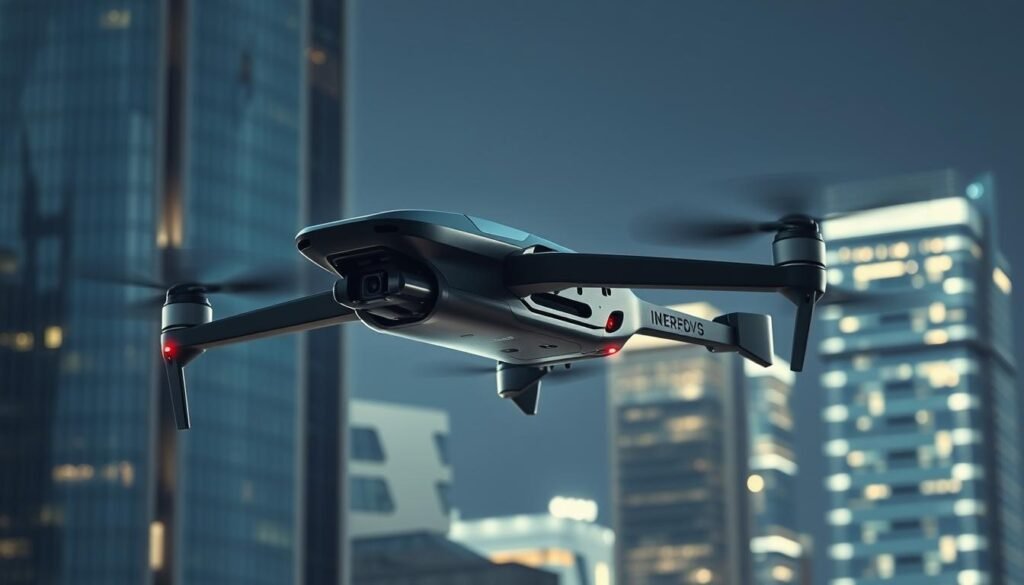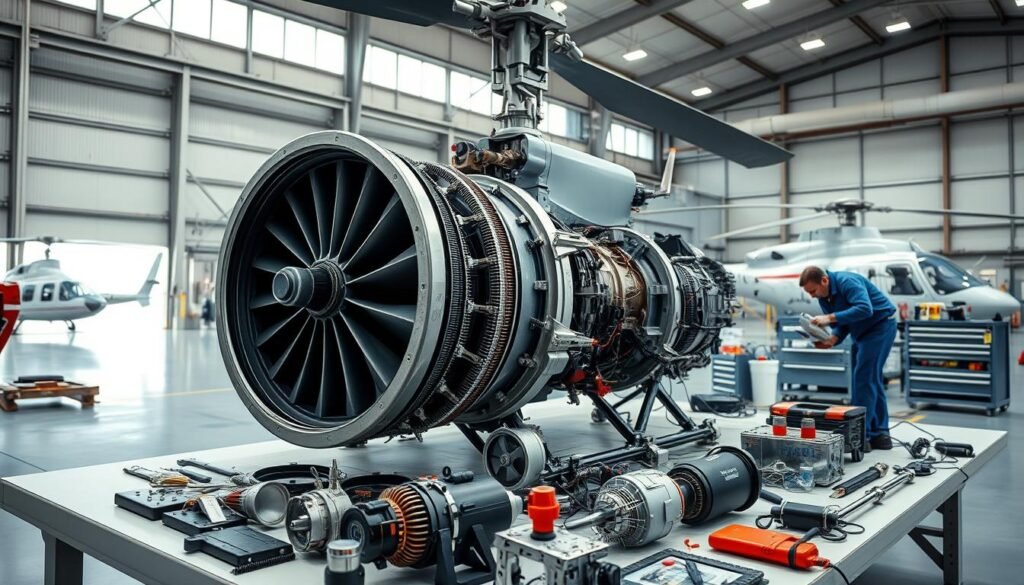In the fast-evolving world of aviation, keeping helicopter systems up to date is crucial for ensuring optimal performance, safety, and efficiency. Whether it’s upgrading avionics, engines, or rotor systems, modernizing helicopters can significantly enhance operational capabilities while extending the life of the aircraft. However, the decision to upgrade isn’t always straightforward, and helicopter operators need to carefully consider the costs, benefits, and timing of such upgrades. In this article, we explore when and why to modernize your helicopter systems, focusing on the key areas that offer the most significant improvements.
1. Why Upgrade Helicopter Systems?
Modernizing helicopter systems offers several advantages, ranging from improved safety to reduced operational costs. Here are the primary reasons operators should consider upgrading their helicopters:
A. Enhanced Safety
Safety is always the top priority in aviation, and upgrading to newer, more advanced systems can significantly improve the safety of your helicopter. Modern avionics, navigation, and flight control systems provide better situational awareness, reduce pilot workload, and increase reliability.
- Advanced Avionics: Modern avionics systems offer enhanced features such as synthetic vision, terrain awareness and warning systems (TAWS), and automated flight control, which reduce the risk of accidents.
- Improved Navigation: Upgrading navigation systems ensures greater accuracy, especially in challenging environments such as low-visibility conditions or mountainous terrain.
B. Regulatory Compliance
Many older helicopters may not meet current aviation regulations, especially in terms of avionics and communication systems. Upgrading to meet these standards is essential to avoid penalties, operational restrictions, or grounding of the aircraft.
- ADS-B Compliance: The FAA’s mandate for Automatic Dependent Surveillance-Broadcast (ADS-B) technology is a prime example of a required upgrade that improves aircraft tracking and enhances safety. Non-compliance can result in restrictions on airspace usage.
- Environmental Standards: As environmental regulations become stricter, upgrading engines or fuel systems to reduce emissions can help operators stay compliant while also lowering their carbon footprint.
C. Improved Efficiency and Performance
Upgrading key helicopter systems, such as engines or rotor blades, can significantly boost performance. Newer, more efficient systems reduce fuel consumption, increase range, and improve speed, making operations more cost-effective.
- Fuel Efficiency: Modern engines are designed to be more fuel-efficient, allowing for longer flight times and reduced operating costs.
- Flight Performance: Enhanced rotor blades or flight control systems can improve flight stability, lift capabilities, and overall flight performance.
D. Reduced Maintenance Costs
Older helicopters often require more frequent and expensive maintenance. Modernizing systems can lead to fewer breakdowns and longer intervals between maintenance checks, resulting in reduced downtime and costs.
- Improved Reliability: Upgraded systems are typically more reliable, leading to fewer unexpected repairs and less frequent component replacements.
- Longer Lifespan: Modernizing key systems can extend the overall lifespan of the helicopter, allowing operators to maximize their investment.
2. When to Upgrade Your Helicopter Systems
Knowing when to upgrade is as important as understanding why. Operators should consider several factors when determining the timing for modernization.
A. Age of the Aircraft
As helicopters age, their systems naturally become outdated and less reliable. Components wear out, and older technology may no longer be supported by manufacturers. If your helicopter is more than 10-15 years old, it may be time to consider an upgrade.
- Wear and Tear: Mechanical systems, such as engines and rotors, degrade over time, reducing performance and increasing maintenance needs.
- Obsolete Technology: Avionics and flight control systems from older helicopters may no longer meet today’s standards or be compatible with new technology, necessitating an upgrade.
B. Rising Maintenance Costs
If you find that your helicopter is requiring more frequent repairs or that maintenance costs are steadily rising, this is a clear sign that an upgrade may be needed. Newer systems often require less frequent maintenance and are easier to service, leading to cost savings over time.
- Maintenance Frequency: Increased maintenance intervals may indicate that critical systems are nearing the end of their useful life, and upgrading these systems could restore reliability.
- Spare Part Availability: For older helicopters, finding spare parts can become increasingly difficult, and the cost of these parts may rise. Upgrading to more modern systems ensures that parts are readily available and cost-effective.
C. Regulatory Changes
When regulatory authorities introduce new mandates, such as the requirement for ADS-B, it’s often necessary to upgrade avionics and communication systems. Failing to comply with these regulations can result in flight restrictions or penalties, making upgrades essential for continued operations.
- Upcoming Mandates: Keep an eye on regulatory changes and mandates to ensure your helicopter remains compliant. Waiting until the last minute to upgrade can lead to rushed installations and increased costs.
- International Operations: If you operate internationally, different countries may have their own regulations, requiring upgrades to meet specific safety or communication standards.
D. Technological Advancements
The rapid pace of technological advancements in aviation means that helicopter systems can quickly become outdated. Upgrading to the latest technology ensures that your aircraft remains competitive, both in terms of performance and safety.
- New Avionics: Technologies like synthetic vision, enhanced weather monitoring, and satellite communication have transformed helicopter navigation and safety. If your avionics are several generations old, upgrading could provide significant benefits.
- Improved Rotor and Engine Technology: Innovations in rotor blade design and engine efficiency can significantly improve helicopter performance. If your helicopter is lagging behind in terms of fuel consumption or speed, upgrading these components can offer a competitive edge.
3. Key Helicopter Systems to Upgrade
When modernizing your helicopter, certain systems provide the most value in terms of safety, performance, and efficiency. Here are the top systems to consider upgrading:
A. Avionics Systems
Upgrading your helicopter’s avionics is often the first step in modernization. Digital cockpits, GPS, radar, and communication systems play a crucial role in flight safety and efficiency.
- Glass Cockpits: Modern glass cockpits provide pilots with real-time data and improved situational awareness. These cockpits integrate multiple systems into a single interface, reducing pilot workload and enhancing safety.
- Navigation Systems: Upgrading to more accurate and reliable navigation systems, such as GPS and satellite-based communication, improves flight precision and efficiency.
B. Engine Upgrades
Engines are the heart of any helicopter, and upgrading to a more modern engine can significantly improve performance, reduce fuel consumption, and extend the aircraft’s range.
- Turbine Engines: Newer turbine engines offer better fuel efficiency and reliability. Upgrading to a more advanced engine can also reduce maintenance needs and improve flight performance.
- Hybrid Power Systems: As aviation moves toward more sustainable solutions, hybrid engines that combine traditional fuel with electric power are becoming more common. These systems reduce emissions while improving fuel efficiency.
C. Rotor Blades and Flight Control Systems
Rotor blades and flight control systems are essential for stability, lift, and maneuverability. Upgrading to advanced materials and designs can improve the helicopter’s aerodynamics and flight performance.
- Composite Rotor Blades: Modern composite materials offer greater strength and durability than traditional metal blades, reducing wear and improving efficiency.
- Advanced Flight Control: Upgrading flight control systems to include features like automatic stability control, autopilot, and enhanced maneuverability can reduce pilot workload and improve overall flight safety.
4. Cost Considerations for Helicopter Upgrades
While upgrading helicopter systems provides significant benefits, it’s important to weigh the costs involved. The price of upgrades will depend on the systems being modernized, the age of the helicopter, and the extent of the changes.
A. Initial Investment
Upgrades can be expensive, especially if multiple systems are being modernized at once. However, operators should view this as a long-term investment that will pay off in terms of safety, efficiency, and reduced maintenance costs.
- Cost of Avionics Upgrades: Avionics upgrades can range from tens of thousands to hundreds of thousands of dollars, depending on the complexity of the system.
- Engine and Rotor Blade Upgrades: Replacing engines or rotor blades can be costly but may significantly extend the helicopter’s lifespan and improve performance.
B. Return on Investment (ROI)
While the upfront costs of upgrades may be high, the long-term savings in reduced maintenance, improved fuel efficiency, and regulatory compliance often result in a positive ROI.
- Maintenance Savings: Newer systems require less maintenance and are less prone to breakdowns, resulting in lower repair costs over time.
- Improved Efficiency: More efficient engines and rotors reduce fuel consumption, lowering operational costs and increasing profitability.
Conclusion
Upgrading helicopter systems is an essential part of maintaining a safe, efficient, and competitive aircraft. By modernizing key systems like avionics, engines, and rotor blades, operators can enhance safety, improve performance, and extend the lifespan of their helicopters. While the cost of upgrades can be significant, the long-term benefits in terms of reduced maintenance, regulatory compliance, and improved efficiency make it a worthwhile investment. Deciding when to upgrade depends on factors like the age of the aircraft, rising maintenance costs, and technological advancements, but proactive upgrades ensure that helicopters remain reliable and ready for the future.
Related Articles
- Understanding Helicopter Vibration Analysis: Key to Preventing Major Failures
- How AI and Big Data Are Shaping the Future of Helicopter Maintenance
- Upgrading Helicopter Systems: When and Why to Modernize Your Aircraft
- The Importance of Regular Avionics Checks for Helicopter Performance
- Helicopter Maintenance in Extreme Weather Conditions: What Technicians Need to Know
More from This Category
- Digital Cockpits: How Modern Technology Is Transforming Helicopter Navigation
- The Role of Predictive Maintenance in Helicopter Fleet Management
- Innovative Materials in Helicopter Design: Enhancing Durability and Efficiency
- How Helicopter Technology Is Revolutionizing Emergency Response Operations
- Rotor Blade Maintenance: Why It’s Critical for Safe Flight
- The Future of Autonomous Helicopters: What Technology Holds for the Aviation Industry
- Helicopter Engine Maintenance: Best Practices for Longevity and Efficiency
- How Advances in Avionics Are Improving Helicopter Safety and Performance
- Routine Helicopter Maintenance Checklist: What Every Pilot Should Know
- The Evolution of Helicopter Technology: From Early Models to Modern Innovations



